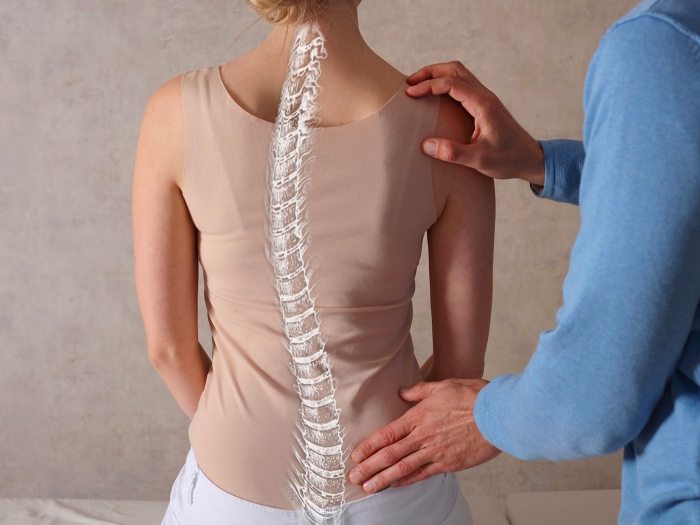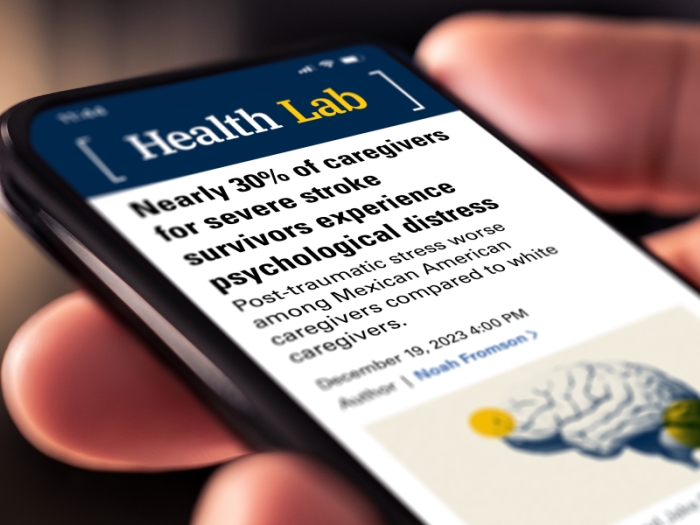Michigan Medicine experts explain how that new home workspace could be causing back and neck pain, and offer tips for creating a space that’s easier on your muscles and joints.
4:20 PM
Authors |

Editor's note: Information on the COVID-19 crisis is constantly changing. For the latest numbers and updates, keep checking the CDC's website. For the most up-to-date information from Michigan Medicine, visit the hospital's Coronavirus (COVID-19) webpage.
Interested in a COVID-19 clinical trial? Health research is critical to ending the COVID-19 pandemic. Our researchers are hard at work to find vaccines and other ways to potentially prevent and treat the disease and need your help. Sign up to be considered for a clinical trial at Michigan Medicine.
With many Americans working from home unexpectedly during the COVID-19 pandemic, people are turning their dining room tables, couches, or even quiet closets, into a workspace. And for some, several weeks of working from home have already come and gone.
But, what is working in an environment unlike the typical office and desk setting doing to the back, spine and neck?
"With the recent shift from working in the office setting to working from home, many individuals are forced to work in a less than ideal ergonomic environment," says Rakesh Patel, M.D., service chief of spine and an associate professor of orthopaedic surgery at Michigan Medicine.
"The environments referenced above, such as the dining room table, mean the person is working in a hunched over position, which is associated with increased back pain."
An ergonomic environment is one where the worker is comfortable in their workspace and doesn't feel any strains or pain, says Sarah Platt Cooney, OTR/L, an ergonomics program coordinator for the University of Michigan Department of Environment, Health and Safety.
Now that several weeks of social distancing and working from home have happened, could a less than ergonomic workspace have already damaged the body?
"It's unclear if long-term poor ergonomics leads to premature degenerative disc disease, or pain in the back and neck because of an injured spinal disc," Patel says. "But, the worse the workspace, the less someone will be able to tolerate it. Additionally, the individual's fitness, or core strength, and spine health will play a significant role in how long someone can work without the onset of symptoms."
Like Podcasts? Add the Michigan Medicine News Break to your Alexa-enabled device or subscribe for daily updates on iTunes, Google Play and Stitcher.
Cooney and Patel provide some easy tips for making a current home workspace more ergonomic and one that doesn't result in a trip to the doctor's office for back and neck pain.
Find a workspace that enables productivity.
An ergonomic workspace includes being comfortable, which can lead to improved productivity. Find a comfortable area that avoids distractions, but allows access to all the tools needed to be productive.
Sit in a chair that is comfortable and, if possible, adjustable.
Cooney says it's understandable that most people will have to use a chair from their dining table. If so, grab some pillows for additional padding and roll up a towel to place near the lower back for lumbar support.
Patel adds, "Experimenting with different chairs, for example, one with a back and one without a back, can also provide relief. Some chairs and stools have adjustable heights that could also put you in an optimal ergonomic position."
Cooney says the feet also play a role in comfort.
"Be sure your feet are supported to avoid lower back pain," she says. "If your feet don't reach the ground, use a footrest or a stack of books for support."
Adjust that laptop computer.
"A desktop computer is better for you ergonomically, but many people working from home are using a laptop as their primary computer," Cooney says. "Our main goals in helping set up a laptop workspace are avoiding discomfort and reducing the head-down position."
She adds, "If you happen to have a monitor at home that you could hook the laptop up to, that would be most preferred."
If a monitor isn't available, she says to choose a space that eliminates glare on the laptop screen, and raise up the screen using a stack of books or other materials so it's eye level. Using an external keyboard and mouse will allow for raising up the screen and will keep the elbow positioned at a 90-degree angle. Keep the keyboard and mouse close to the body to avoid reaching forward.
Take stretch breaks.
Both Cooney and Patel agree that taking frequent breaks to stretch and relax the muscles are needed.
"Simply getting out of the seated position by walking around the house is beneficial," Patel says. "Some individuals set up a standing home workspace and report great pain relief. In addition to breaks, strengthening one's core can be extremely helpful, too."
Cooney adds, "It's even beneficial to opt for a change of scenery and move to a different workspace within the house."
Patel's main takeaway if a workspace is leading to discomfort: "There are three things people can do to help with back pain associated with sitting for prolonged times: change the height of the desk, change the chair and take intermittent breaks to stretch."

Explore a variety of healthcare news & stories by visiting the Health Lab home page for more articles.

Department of Communication at Michigan Medicine
Want top health & research news weekly? Sign up for Health Lab’s newsletters today!





